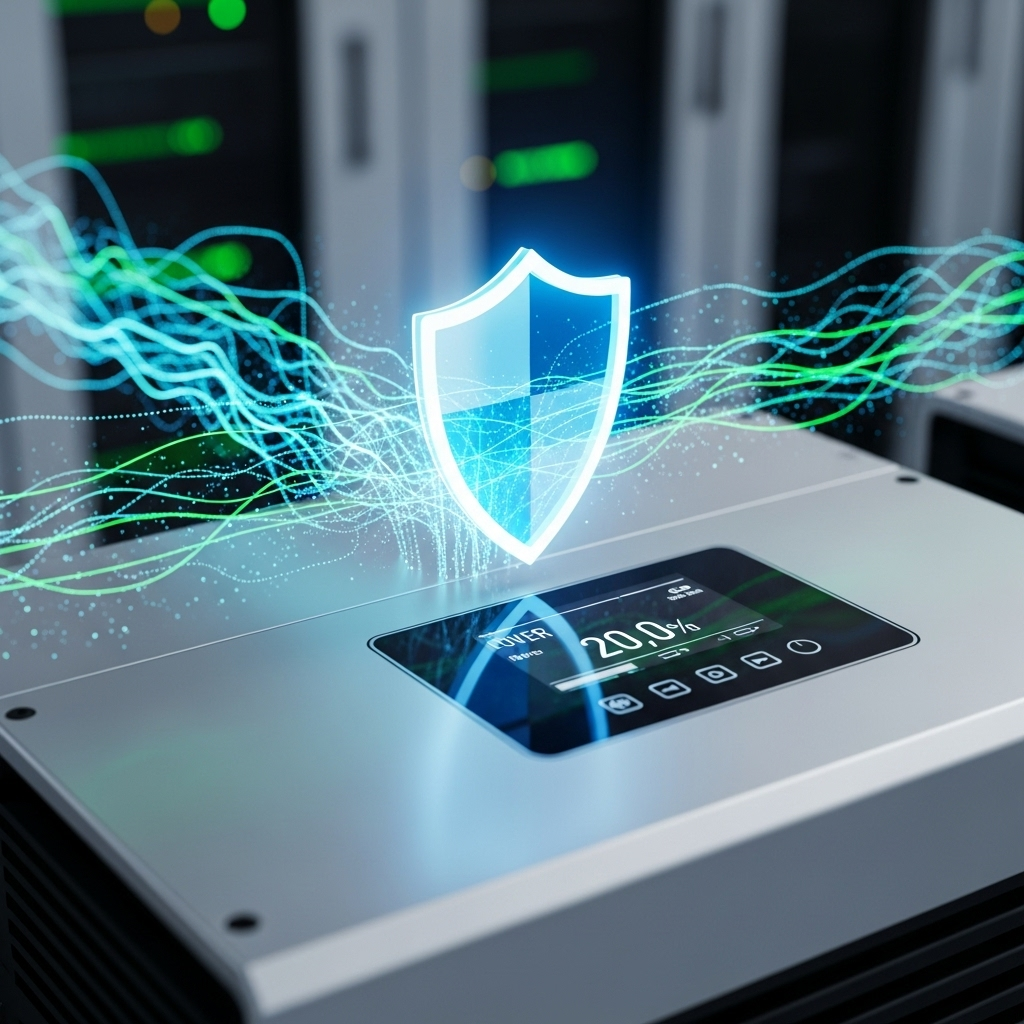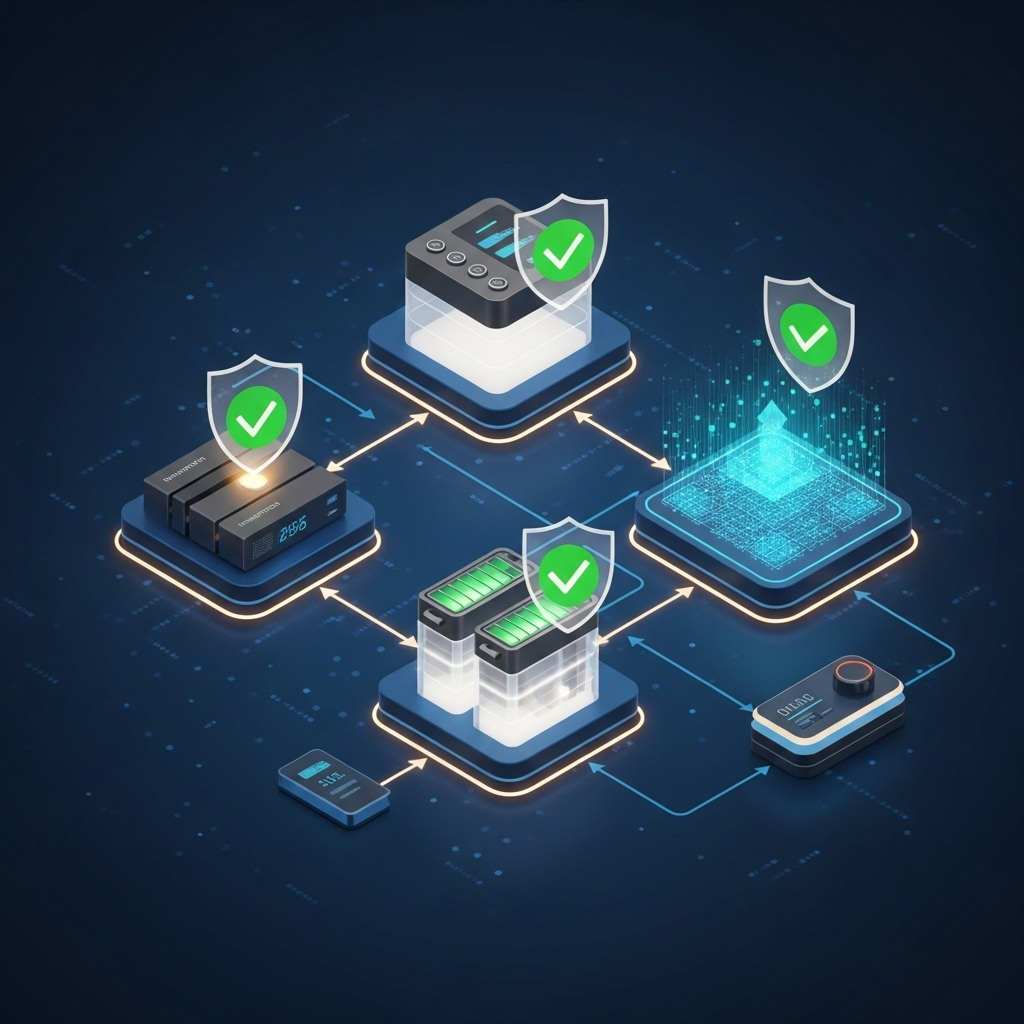The solar inverter is the operational core of your energy system, converting direct current (DC) from solar panels into alternating current (AC) for your home. Its performance and security rely heavily on its internal software, known as firmware. Regular firmware updates are necessary to introduce new features and patch vulnerabilities. Yet, the update process itself can open doors to significant security risks. Mishandling these updates can compromise not just your system, but potentially the wider grid. This overview identifies seven critical pitfalls in firmware updates and outlines how to manage them effectively.
The Double-Edged Sword of Connectivity
Modern inverters offer powerful remote monitoring capabilities. This connectivity, while convenient, creates new pathways for potential threats if not properly secured. The challenge lies in balancing accessibility with robust protection.
The Rise of Remote Monitoring and Control
Digital communication interfaces allow users and manufacturers to check system status, track performance, and perform limited remote maintenance like installing software updates. This programmability is a major advantage. According to a report by the International Renewable Energy Agency, the response of inverter-based resources to disturbances is almost entirely dependent on controller software. As the Grid Codes for Renewable Powered Systems report highlights, this makes it crucial that communication software is secure enough to prevent unauthorized access and that updates can be applied at any time to close newly found security holes.
Unsecured Communication Channels
Transmitting firmware updates over unsecured or poorly protected networks is a major vulnerability. Without proper encryption, malicious actors can intercept or alter the update files in what is known as a 'man-in-the-middle' attack. To counter this, industry best practices recommend using Transport Layer Security (TLS) to ensure encryption, authentication, and data integrity. This protocol helps protect the system against eavesdropping and data spoofing cyberattacks, creating a secure tunnel for all communications.
Critical Firmware Update Process Flaws
The procedures for applying updates are just as important as the security of the communication channels. Flaws in the update process can render other security measures ineffective, leaving the system exposed.

Lack of Update Authentication
A secure system must verify that a firmware update comes from a legitimate source. Without a strong authentication mechanism, an inverter could be tricked into installing malicious software disguised as a genuine update. This could give an attacker complete control over the device. Using authentication ensures the identity of personnel and vendors is confirmed, and that different systems have different privileges for accessing monitoring and control systems. This enforces a rule of least-privilege, limiting potential damage.
No Option for Firmware Rollbacks
Sometimes, a legitimate update may contain bugs or cause unexpected operational issues. In a worst-case scenario, a malicious update is installed. Without the ability to revert to a previous, stable version of the firmware, the system could remain compromised or non-operational. Implementing the ability to perform firmware 'rollbacks' is a key function that helps systems recover from malware embedded in updates or from software files that introduce instability.
Inadequate Physical Security
Cybersecurity is not only about digital threats. If an unauthorized individual can gain physical access to the inverter, they may be able to bypass remote security measures entirely and load malicious firmware directly onto the device via a physical port. Instituting adequate physical security is a fundamental step to protect hardware from malicious physical actions and prevent unauthorized access to critical system components.
Human and Procedural Oversights
Technology alone cannot guarantee security. Human error and weak internal procedures often create the most easily exploited vulnerabilities. Simple oversights can undo complex technical safeguards.
Weak Password Management
Many security breaches stem from weak, default, or easily guessable passwords. Inverters, like any networked device, are susceptible to brute-force attacks where an attacker uses automated systems to try thousands of password combinations. Instituting effective password management policies, such as requiring complex passwords and regular changes, is a simple yet powerful defense to ensure devices cannot be easily undermined.
Ignoring Update Notifications
Manufacturers release firmware updates for a reason—often to patch security vulnerabilities that have been discovered. Delaying or ignoring these updates leaves your system exposed to known threats. A disciplined approach to applying security patches promptly is essential for maintaining a secure operational environment. The International Energy Agency emphasizes the need to update grid codes to ensure new generation assets do not negatively affect system security, a principle that applies directly to individual inverters. As detailed in their Integrating Solar and Wind report, compliance needs to be monitored across all assets.
Best Practices for Secure Firmware Management
A proactive and multi-layered approach is the most effective way to protect your solar inverter. By combining robust technology with disciplined procedures, you can minimize the risks associated with firmware updates.
Implementing a Multi-Layered Security Approach
There is no single solution for total security. A strong defense involves multiple layers of protection. A project supported by the U.S. Department of Energy developed a three-layer energy management system for microgrids to secure them against cyberattacks. As explained in the Success Story—Using Renewable Microgrids to Keep the Lights On, this system provides situational awareness, allows distributed resources to work cooperatively without central control, and even enables autonomous restoration of the power system after a complete shutdown.
Verifying Update Integrity and Performance
Beyond authenticating the source, it is important to verify the integrity of the firmware file itself. This is often done using cryptographic hashes or digital signatures, which act as a unique fingerprint for the file. If the file is altered in any way during transmission, the signature will not match, and the update will be rejected. Maintaining optimal system health also extends to efficiency. A secure, updated system should perform at its best. Understanding key metrics is crucial for this. For a deeper look into evaluating system efficiency, consult this ultimate reference on solar storage performance.
Securing Your Energy Future
Firmware updates are vital for the health and functionality of your solar inverter. They provide access to the latest features and protect against emerging threats. However, the update process must be managed with diligence and care. By avoiding common pitfalls such as using unsecured networks, failing to authenticate updates, and practicing poor password hygiene, you can protect your investment. A secure inverter is fundamental to achieving reliable, long-term energy independence.
Frequently Asked Questions
What is a firmware 'rollback'?
A firmware rollback is a recovery process that allows you to revert the inverter's software to a previous, stable version. This is a critical safety feature in case a new update causes operational problems, contains bugs, or is found to be malicious. It ensures you can restore functionality quickly without waiting for a new patch.
How often should I update my inverter's firmware?
You should install firmware updates as soon as they are released by the manufacturer, especially if they are labeled as security patches. Manufacturers release updates to fix known vulnerabilities, improve performance, and add new features. Delaying updates can leave your system unnecessarily exposed to known risks.
Can a cyberattack on my inverter affect the entire grid?
Yes, it is possible. Inverters are becoming increasingly interconnected. A widespread, coordinated attack on a large number of distributed energy resources, like residential solar inverters, could potentially be used to destabilize the local or regional power grid. This is why securing individual devices is part of maintaining overall grid security and resilience.





Leave a comment
All comments are moderated before being published.
This site is protected by hCaptcha and the hCaptcha Privacy Policy and Terms of Service apply.